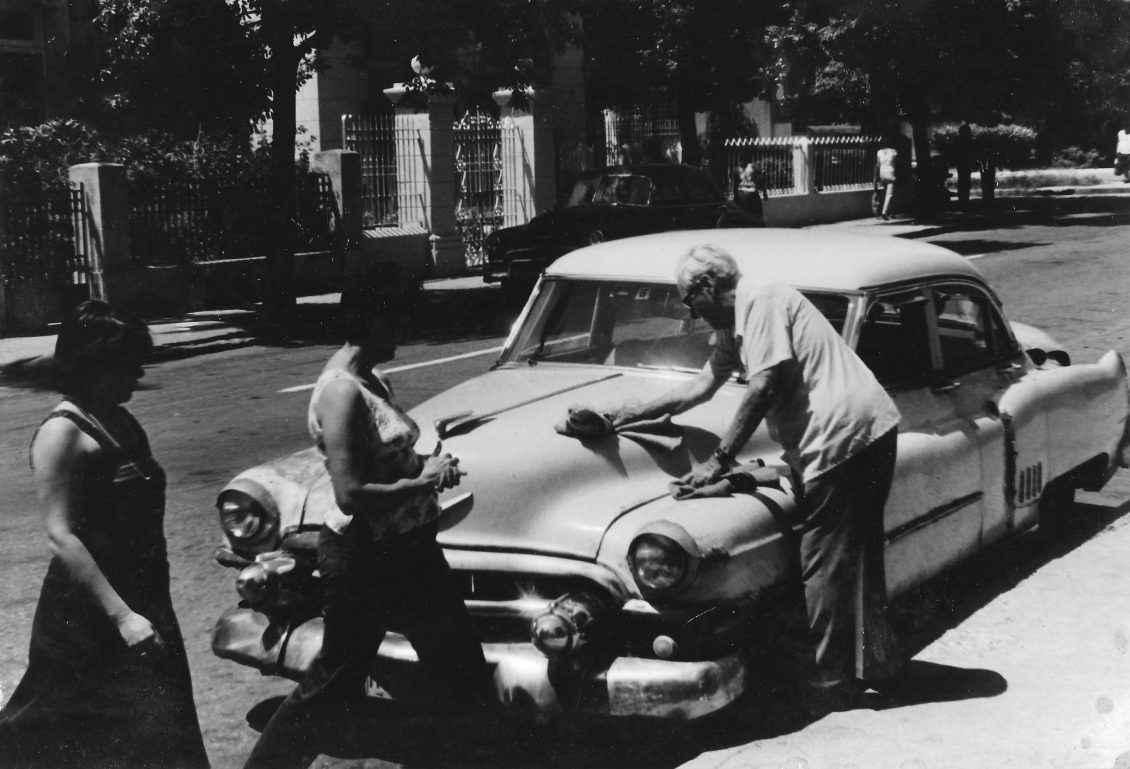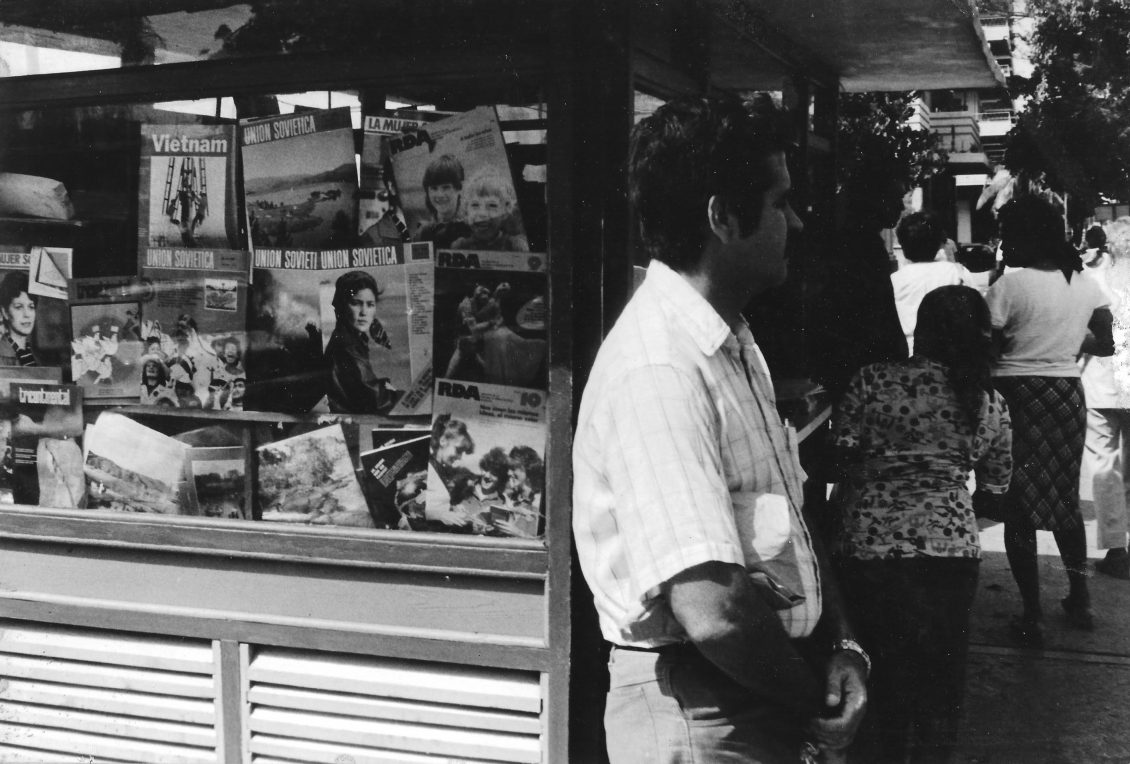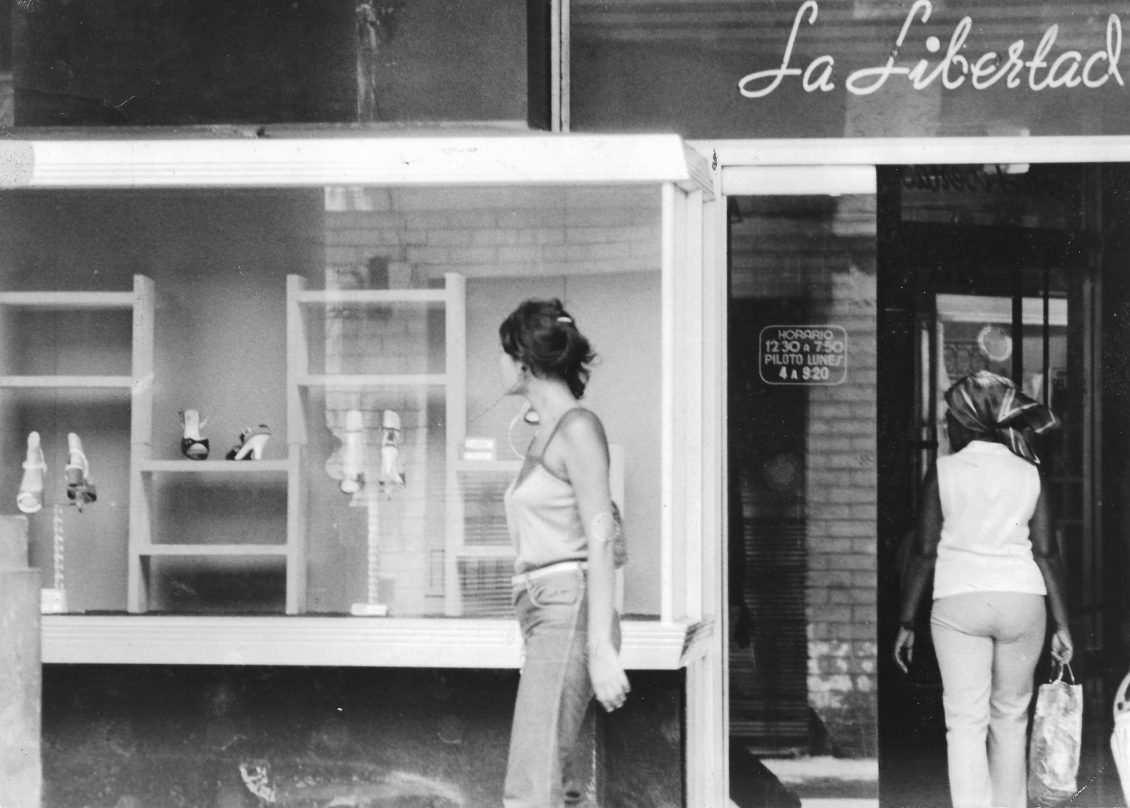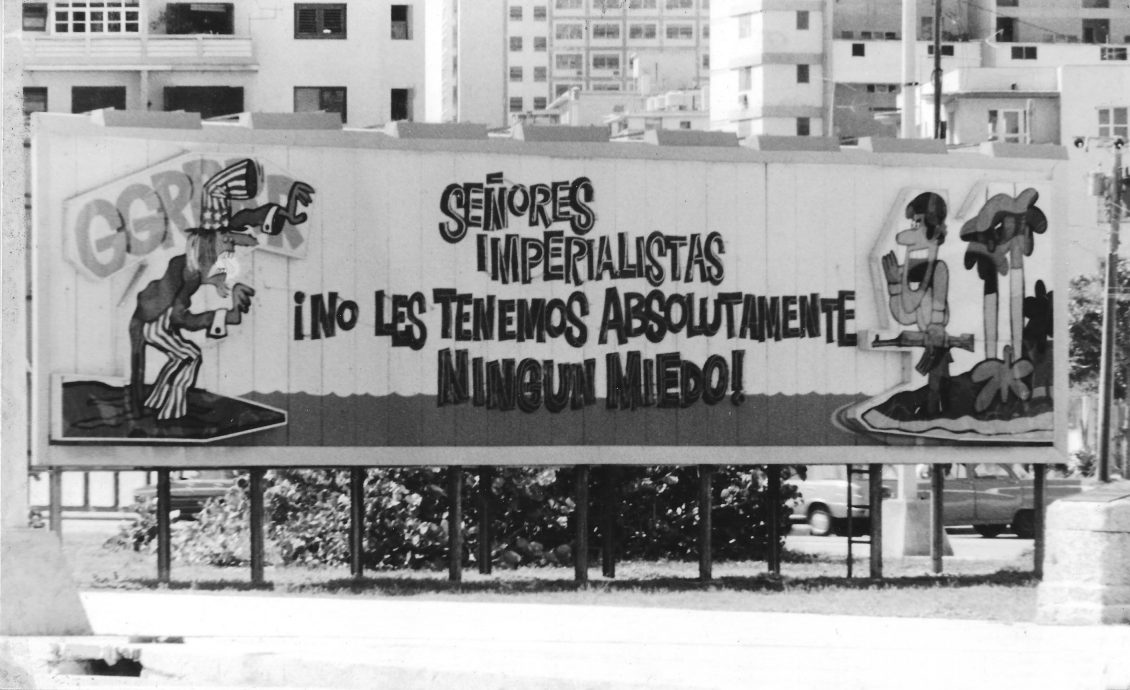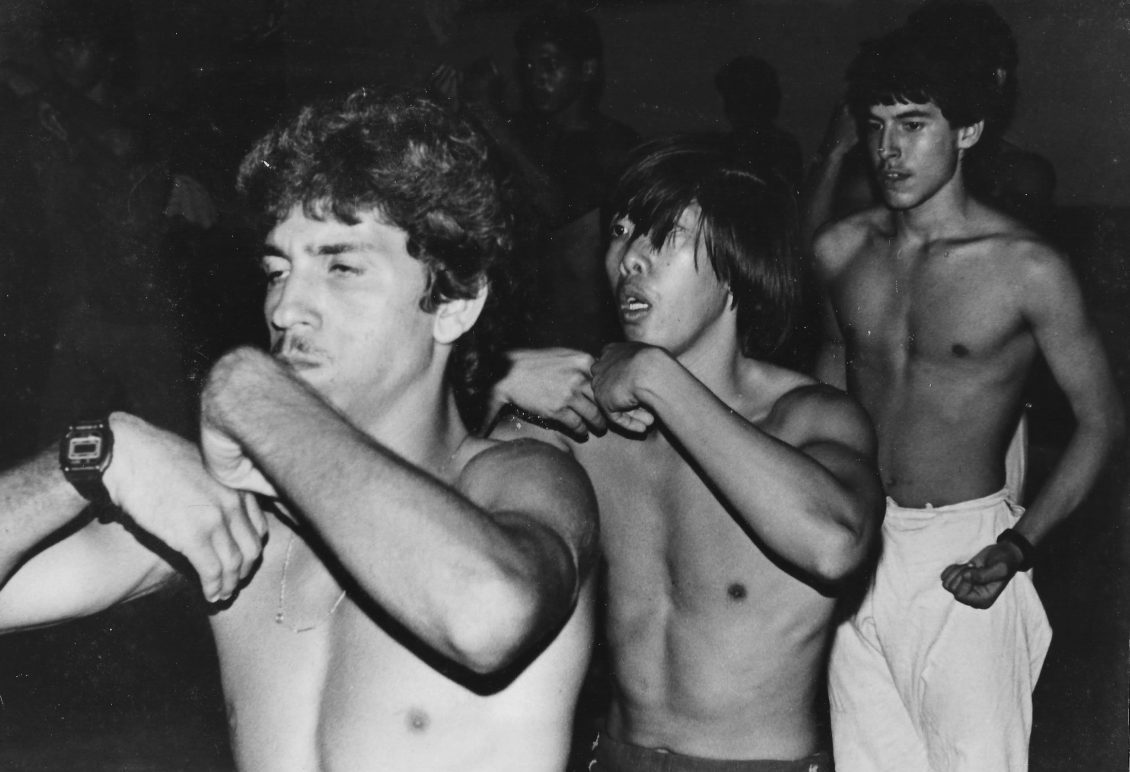The subject of economics can become an obsession here in Cuba.
One is constantly reminded of the trade sanctions imposed upon the island in 1958 after the revolutionary government nationalized some 2 billion in U.S. corporate assets. Everywhere in the streets, that date is fixed in time by the vintage American cars lovingly preserved since the last importation was permitted. Where do they get the parts for all these ’53 Chevy’s, the “three-hole” and “four-hole” Buicks that are driven every day? My neck muscles wearied from snapping around to look at bits of history cruising the narrow streets.
But from 1958 on, everything is Soviet.
The real culture shock upon entering Cuba is the strange confrontation between American influences and the Eastern bloc influences that are shaping the new face of Cuba.
Like Berlin, Cuba represents the meeting ground of East and West, but here the West is dead. Its image lies in the rusting, rolling relics preserved like the glass-encased mummies in the cathedrals of old Mexico.
My thoughts wander to Detroit’s sales slump and America’s foreign trade deficit. I wonder how many markets we’ve piously cut out because we could no longer accept a change in the rules of the game dictated to us by another player seeking liberty.
I wonder if we shouldn’t try to face up to some hard facts here. It’s been over 25 years since we decided to stop buying Cuban sugar, rum and cigars, refusing to export our finished goods in return. Cuba has survived. It is not about to go away; no matter how badly certain groups would like to see it happen.
Why then can’t the capitalist system try to win on its merits? If we can’t change them by force, then let’s sell them Dr. Pepper and Levis. After all, they still manage to smuggle in Walt Disney cartoons and this morning I was treated to the sounds of Madonna mixed with the salsa on the bedside radio. MTV could wreak havoc in Havana.
Today at noon, I was even convinced that they had found a way around certain trade sanctions when I stopped to rest in the shade of a city park. I sat watching a woman finish the last swallows of her Pepsi. It was hot. I was thirsty. The fritas I bought for lunch were salty and I wondered where she got that soda. Then, I watched as she carefully wiped the inside of the can with a paper napkin. The top had been previously cut out with a rotary can opener. She replaced the stylish water container in her purse for reuse later on.
Cubans are wild about American stuff. People of both countries seem to be suffering from our government’s inability to accept change. And there have been many changes here in 27 years.
The Cuban people are quite proud that all their medical services and medicines are free. A few blocks from our hotel there’s a very large and new hospital towering over the surrounding neighborhood.
Education is also free, through the college level for those able to pass required exams.
The fact that we have withdrawn our cultural and economic influences from Cuba has not caused the island to dry up. The people have merely turned elsewhere for that input. The East doesn’t represent a modern alternative – just the only alternative. Cuba, so far removed from the other Socialist nations both culturally and geographically, makes this situation all the more bizarre.
The Cubans are fiercely committed to defending their country against outside aggression. In this respect, they have developed a great empathy with the Vietnamese. Our own CIA and Cuban expatriates, through an ongoing series of secret military-like missions against the revolutionary government, inadvertently strengthened these bonds, while firmly establishing Cuban commitment to the defense of the revolution.
Trying to understand the post-revolutionary system of art-economics then, is a little like trying to arrive at Miami International airport by car. One travels in ever diminishing circles confident that the intended goal is just around the next bend.
As is usually the case with bureaucratic systems, there are a series of imposing guardians at each gate leading to the seat of power aka, the National Union of Cuban Writers and Artists. After 2 days of trying, I finally gained access to Rafael Zarza who presides over a collection of Cuban painters regarded as “professionals” by their government. I learned that these professional artists are subsidized. Their works are purchased for various state buildings, hotels, libraries and such.
After an amiable conversation, Rafael led me into the classic Catch 22 situation. He would be glad to arrange interviews with anyone who would agree. There were 322 professional painters in Havana. All I had to do was supply him with a list of names of the artists I wished to meet.
I explained that in America there is not much information available to us about current Cuban artists. I would gladly accept his recommendations on who to interview, hoping to illustrate a cross-section of the various styles prevalent in the city at this time. He then explained that there were no specific movements or schools in painting at this time, and he was unable to select at random or recommend specific artists. It would be up to us to find out who the artists are. His offices did not publish a list of the artists they represent and he also said that everyone was very busy with Carnival coming up next week.
“Come back on Monday,” he advised.
Many of the artists’ works were on display in the national museum, but it happened to be closed for renovation. Things were looking very bleak. My last hope was to visit galleries and take down names.
Art galleries in Havana are unusual in that there are only two that exist to sell works to the public. With the main customers being the Cuban government, galleries exist mainly as cultural extension centers enabling people to experience art.
I made my way to La Galleria Habana, one of the two run by the Cuban Foundation for Cultural Resources. The sign on the door announced daily hours from 2:30 p.m. It was now an hour after that, but the door was locked.
Two school girls left after trying to gain access, then a couple of women tried to enter and told me about another entrance around the back. I followed them and discovered that the main gallery was closed this afternoon in preparation for the opening of a new show of paintings by Leandro Soto. It would open that evening, but I would be welcome to come in and look around.
Having suffered through so many restrictions and obstacles it was about time for my luck to turn. Leandro Soto just happened to be there arranging last minute affairs and just happened to speak French and some English and just happened to like talking about his work. Nicole Bastere, my tri-lingual French interpreter, agreed that things were finally looking up.
